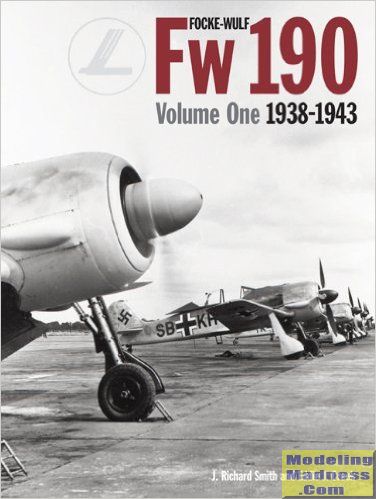 Focke-Wulf
was known before WWII mostly for their trainers and transports. However, unlike
many other German aircraft manufacturers, they were willing to look into
building all sorts of aircraft types. They built the very popular FW-44 biplane
trainer, the FW-200 Condor airliner and were involved in projects later in the
war like wooden nightfighters, medium bombers, helicopters, and early jet types.
However, what the company is most well known for is the FW-190 family of day
fighters.
Focke-Wulf
was known before WWII mostly for their trainers and transports. However, unlike
many other German aircraft manufacturers, they were willing to look into
building all sorts of aircraft types. They built the very popular FW-44 biplane
trainer, the FW-200 Condor airliner and were involved in projects later in the
war like wooden nightfighters, medium bombers, helicopters, and early jet types.
However, what the company is most well known for is the FW-190 family of day
fighters.
Here was an aircraft that was borne of no competition,
unlike most other Luftwaffe types. It was the pre-war rumors of the superiority
of the Spitfire that moved the RLM to ask Focke-Wulf to build a fighter that was
better that what they'd heard rumored. As is often the case, the designers were
up to the task and the result was a small, radial engine aircraft that showed a
lot of improvements over the current fighter, the Bf-109. There were two major
differences that one could spot right away. First was the radial engine. The
Luftwaffe had previously relied mostly upon liquid cooled engines, however, BMW
developed a small, dual row 14 cylinder engine based on the Twin Wasp. The other
major difference was the wide track landing gear. The 109 was infamous for its
ease in ground looping, all thanks to the very narrow track landing gear. While
a narrow track gear had its benefits, ground handling was not one of them.
The prototype first flew in mid 1939 with an unusual
ducted spinner, thought to be more aerodynamically efficient. It was not. In
fact, it caused the engine to overheat due to a lack of cooling air and the
plane's performance actually improved once this thing was removed. During flight
testing, it was discovered that the wing was actually too small causing landing
speeds beyond what most pilots found comfortable. It also did not leave a ton of
room for armament. Only the early preproduction types had this shorter wing.
There were also teething troubles with the engine and fires on the ground were a
real problem with the early variants.
Eventually these things were worked out and the 190
became a real surprise to the RAF. Here was a German fighter that outclassed
their latest Spitfires and it was not until the Mk IX reached units that parity
was reached. So successful was the 190 design that it was in production in one
form or another until the end of the war.
Volume one covers a brief history of Focke-Wulf along
with the development of the 190. Smith and Creek have impeccable credentials as
Luftwaffe historians, thanks to their thorough research into whatever subject
they choose. This is quite evident throughout this, the first of three volumes
on this aircraft.
The book is absolutely chock full of period photos,
drawings and color profiles. We get to see not only the development of the
aircraft (and the 190 was built in many experimental variants), but the various
systems that were tested on the aircraft up until 1943. This covers basically up
until the initial deployment of the FW-190A-6. In this are also combat use as
well as the development of the airframe. No where will you find more information
on these planes and their operational use than this series. If I sound like a
convert, then I am. I have been buying books in this series since #1 and this is
#18. These books have settles many differences of opinions and are valuable to
the enthusiast and modeler alike. If you can afford the cover price, then these
are for you.
September 2015
 Focke-Wulf
was known before WWII mostly for their trainers and transports. However, unlike
many other German aircraft manufacturers, they were willing to look into
building all sorts of aircraft types. They built the very popular FW-44 biplane
trainer, the FW-200 Condor airliner and were involved in projects later in the
war like wooden nightfighters, medium bombers, helicopters, and early jet types.
However, what the company is most well known for is the FW-190 family of day
fighters.
Focke-Wulf
was known before WWII mostly for their trainers and transports. However, unlike
many other German aircraft manufacturers, they were willing to look into
building all sorts of aircraft types. They built the very popular FW-44 biplane
trainer, the FW-200 Condor airliner and were involved in projects later in the
war like wooden nightfighters, medium bombers, helicopters, and early jet types.
However, what the company is most well known for is the FW-190 family of day
fighters.